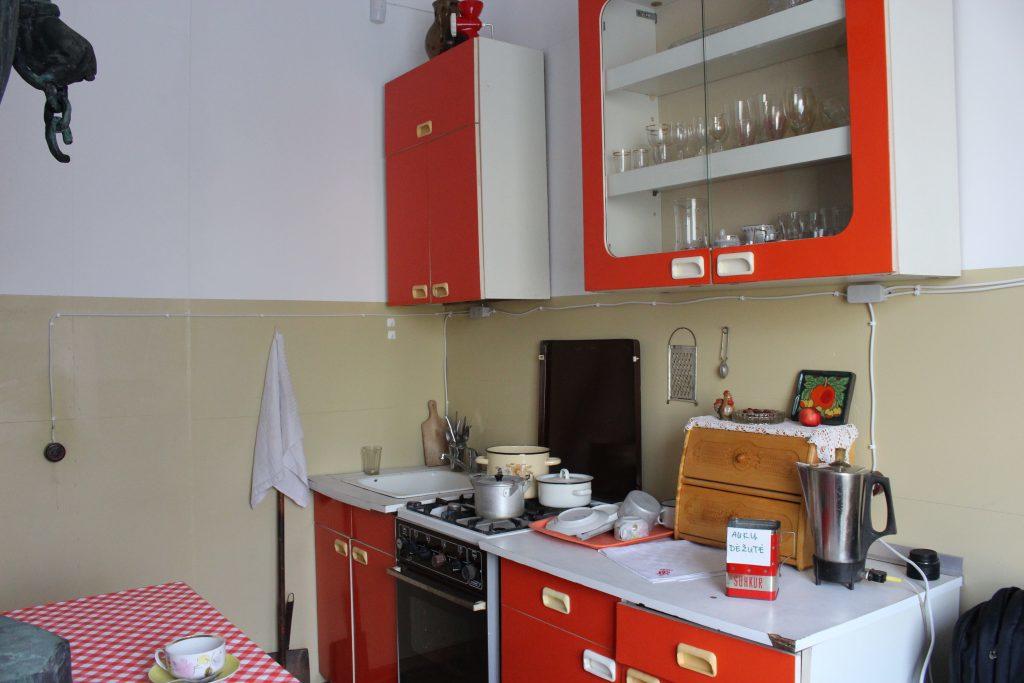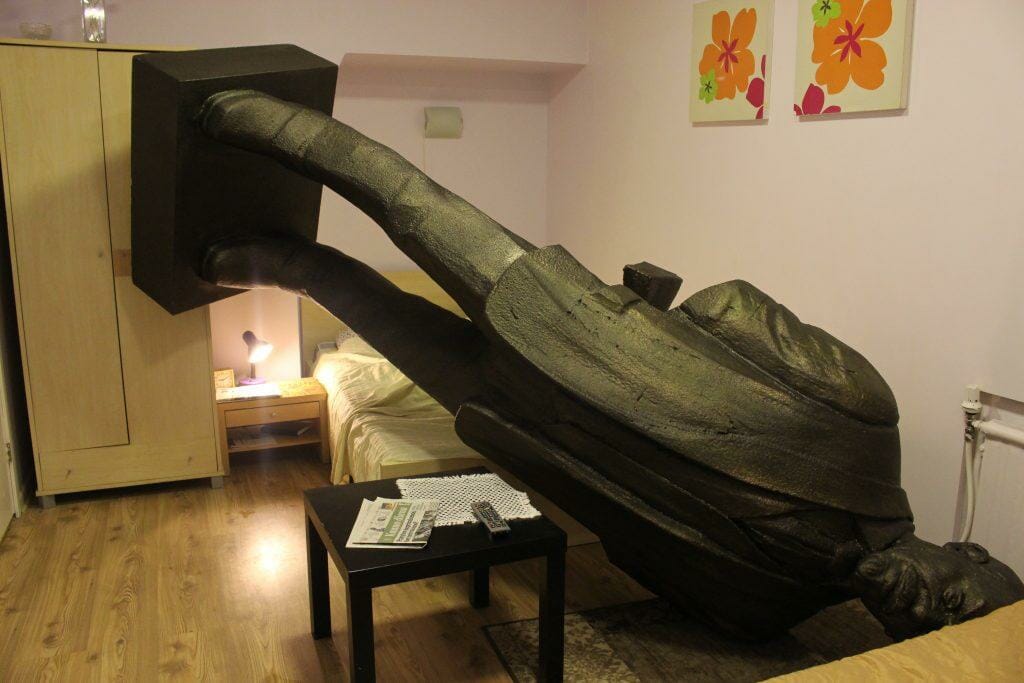Kauno Bianalė (Kaunas Biennial) is a very interesting event that takes places in Kaunas, Lithuania, every two years. It is very interesting in a way that you don’t have to notice it, even if you live in Kaunas, but the entire city centre becomes an art gallery of sorts. All the pieces were very interesting this year, but two of them were met with so many surprised faces we had to write about them.
Kaunas has its own Statue of Liberty – it is our “Laisvė” (“Freedom”), standing proudly on a tall pedestal in the very heart of Kaunas. It was created by a famous artist Juozas Zikaras back in 1921, but was demolished in 1950 by soviets, who did not want any symbols of freedom in Lithuanian eyes.
This is quite important piece of the story, because for 39 years Kaunas’ “Laisvė” was gone from the square, but not from the memory. In 1989 it was rebuilt as Lithuanian hopes for independence were growing stronger. Now it is one of the most important symbols of Kaunas, which is here to stay forever.

However, being 12 meters from the ground “Laisvė” doesn’t have a chance to meet people of Kaunas. And that is where Kaunas Biennial comes along. Japanese artist Tatzu Nishi created and installation, which basically puts “Laisvė” in a soviet-design kitchen. A mock-up of a room was built on some construction-grade scaffolding and it was decorated with furniture, wallpaper and utilities from the period, when “Laisvė” was taken away from Kaunas and Lithuania.

This very special art piece represents the time shockingly well and the symbolism is both deep and understandable. During that period when the subject of freedom was taken away from the public, people could only speak about it in their own privacy in their own kitchens. “Laisvė” lived on the tables of every Lithuanian house. Until it accumulated, grew stronger and emerged with such power no one could stop it. Not even Lenin’s in our squares and in our eyes. So they fell.

There is another piece of Tatzu Nishi in Kaunas. This one, called “Flat for rent”, is even more surprising. It is a small room for rent, typically used by tourists. But not for now. Now there is a Lenin sculpture, a copy of one that used to stand nearby “Laisvė’s” spot, lying on the floor.

The appartment is completely contemporary, but the sculpture is not. The contrast is almost eye-openning. It was explained to us that it can be interpreted as remains of soviet mentality that are living within us despite our modernized exterior. Hopefully, they Lithuanian will get rid of those too.
Here is a little video we shot to remember these two impressive pieces of art
It is interesting that it took a Japanese artist to introduce us to our “Freedom” eye to eye. That’s the result of Lithuania breaking free and a good remainder of the times, when people were just dreaming of “Laisvės” return to the city of Kaunas. Seeing it up close was simply astonishing, but it is time to let it come out again and look upon us from up high – both installations will be removed this Thursday already.




